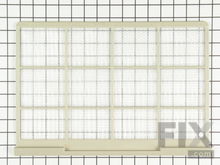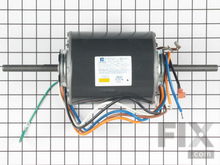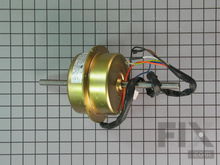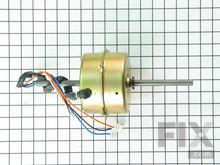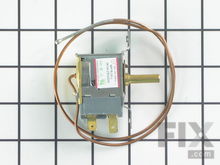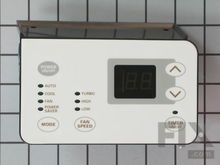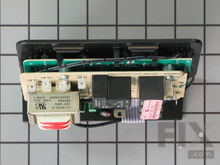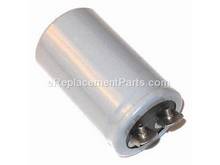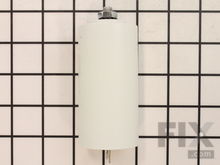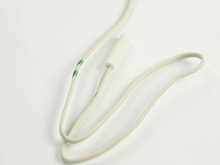How To Repair Air Conditioner That Does Not Blow Cold Air
- Rated as REALLY EASY
- 54 repair stories
- 6 step by step videos
Air Filter
The most common cause of window air conditioners not blowing cold air is a lack of adequate air flow. In a properly working air conditioner, a fan will draw air over the evaporator coils, where it is cooled, and then be re-circulated back into the room. If the air filter is dirty or clogged, there may be little or no air flow over the evaporator coils, which may cause them to become too cold and frost or ice can form on them, restricting the air flow even more. This will result in little or no cool air being circulated into the room. The air filter is normally located behind the front grille which may have a side access opening. Clean or replace the filter as often as required. If the evaporator coils are very dirty then cleaning with soapy water and a soft brush will be required and we also recommend changing the filter.
Fan and Fan Motor
If your window air conditioner is not blowing cold air, the problem could be the fan or fan motor. In a properly working air conditioner, the fan will draw air over the cold evaporator coils and then re-circulate the air back into the room. If the circulating fan is not running or running too slow, little or no air flow over the evaporator coils will allow them to become too cold and frost or ice can form, restricting the air flow even more. The fan and motor are located inside so removal of the cabinet will be necessary to perform any checks. Make sure that the fan motor will turn easily and that the blades are not damaged. If the motor is seized or if the fan blades are damaged then they will need to be replaced. If the motor turns easily it may still be defective or it may not be getting power from the controls. These tests are more complicated and should be performed by a qualified person who is comfortable with the use of a multi-meter.
Temperature Control
If your air conditioner is not blowing cold air and you have inspected the air filter and fan motor and found them okay, then you may have a problem with the temperature control or thermostat. This is the device that monitors the incoming air temperature and turns the compressor on or off. There is normally a sensing bulb attached to the control that will extend to the front of the evaporator coil, and a set of electrical contacts in the body of the control that supply power to the compressor circuit. The bulb monitors the room air temperature and will tell the thermostat control to turn the compressor on when the set temperature is lower than the room temperature. The thermostat will also cycle the compressor off when the desired temperature has been reached. If the temperature control or thermostat is defective, it may not send power to the compressor, and no cooling will take place. Inspect the sensing bulb for any signs of a sharp bend, kink or rupture and replace the control if any are found. You can also check the continuity of the control with a multi-meter by rotating the dial to the lowest setting. Verify that the sensing bulb is properly located in the air flow through the evaporator coils before condemning the control.
Electronic Control Board or PCB Assembly
If your air conditioner not blowing cold air and you have inspected the air filter and fan motor and found them okay, then you may have a problem with the Control Board, sometimes referred to as the PCB. This control board, in conjunction with a thermister, monitors the incoming air temperature and turns the compressor on or off depending on the selected temperature. The thermister is connected to the control board and will extend to the front of the evaporator coil. If the control board is defective, it may not send power to the compressor, and no cooling will take place. Inspect the thermister first for any signs of damage or corrosion before condemning the control board.
Capacitor
If your air conditioner doesn’t blow cold air, the problem may be in the compressor circuit. Most window air conditioners use a capacitor to help start the compressor. If the capacitor fails, the compressor won’t start and the fan will only blow warm air. Some window air conditioners utilize a run capacitor in the fan motor circuit as well and will often combine both devices in the same package or can. The compressor and capacitor are located inside the cabinet and access will require removal of the cover. If the capacitor does not show any visible signs of damage you will require a qualified person to check it with special test equipment. Make sure that the replacement capacitor has the same specifications as the original.
Thermistor
If your air conditioner is not blowing cold air and you have inspected the air filter and fan motor and found them okay, then you may have a problem with the thermistor. This component is found on electronic control models and monitors the incoming air temperature and signals the main control board to turn the compressor on or off. The device is normally located in the air flow near the evaporator coil. If the thermistor is defective, it will not provide the proper signal for the control board to turn the compressor circuit on. Replace the thermistor if there are any signs of damage or corrosion.
More Repair Parts
Still not sure which part is broken? We can offer you custom troubleshooting help if you search with your model number.






